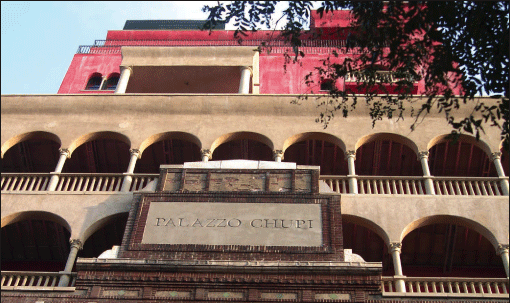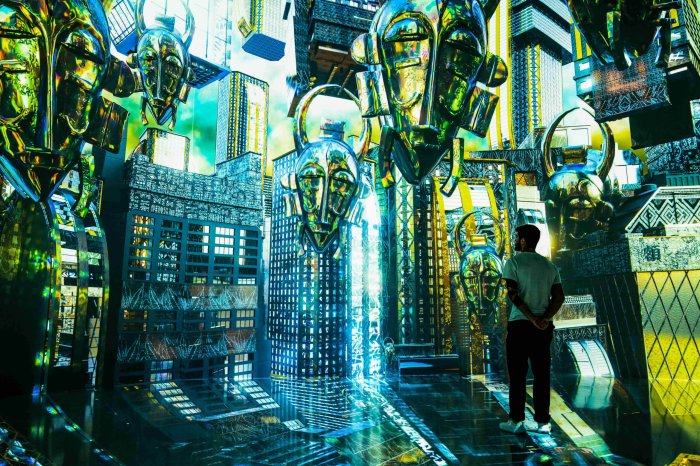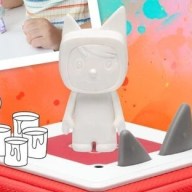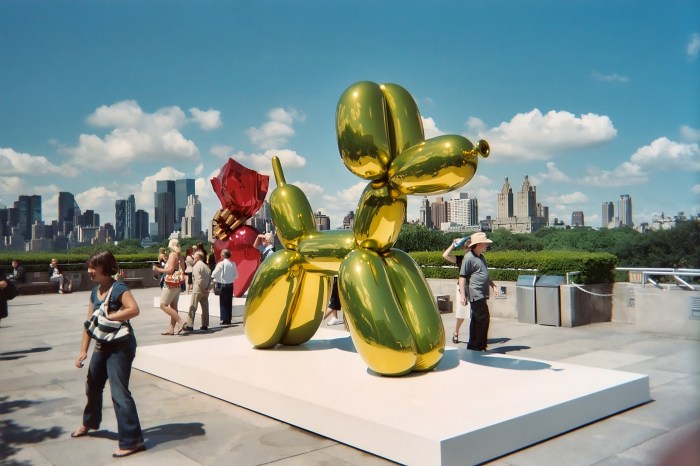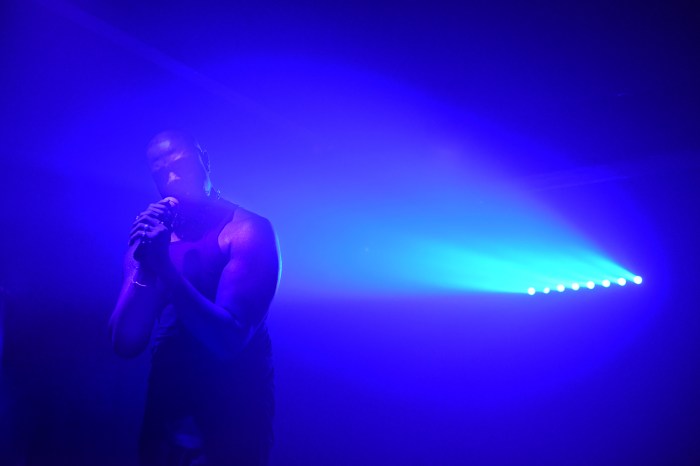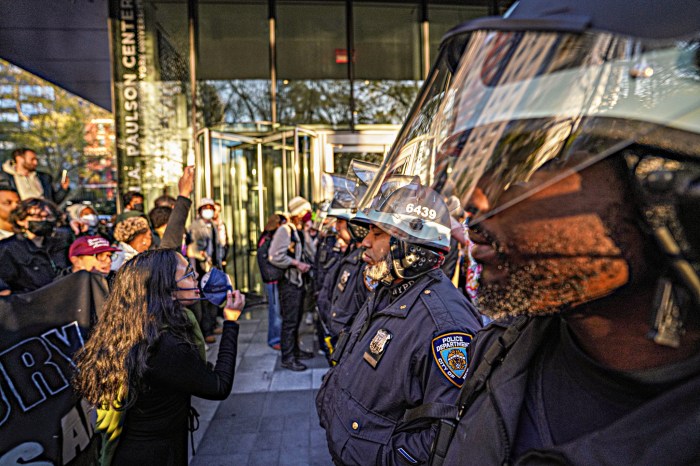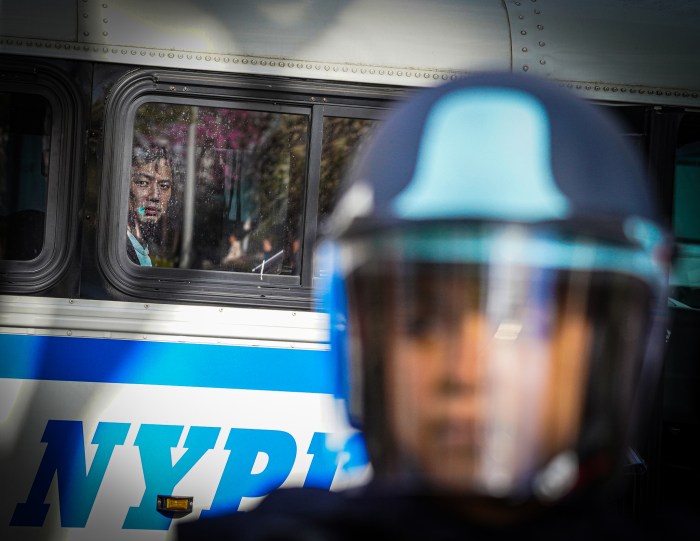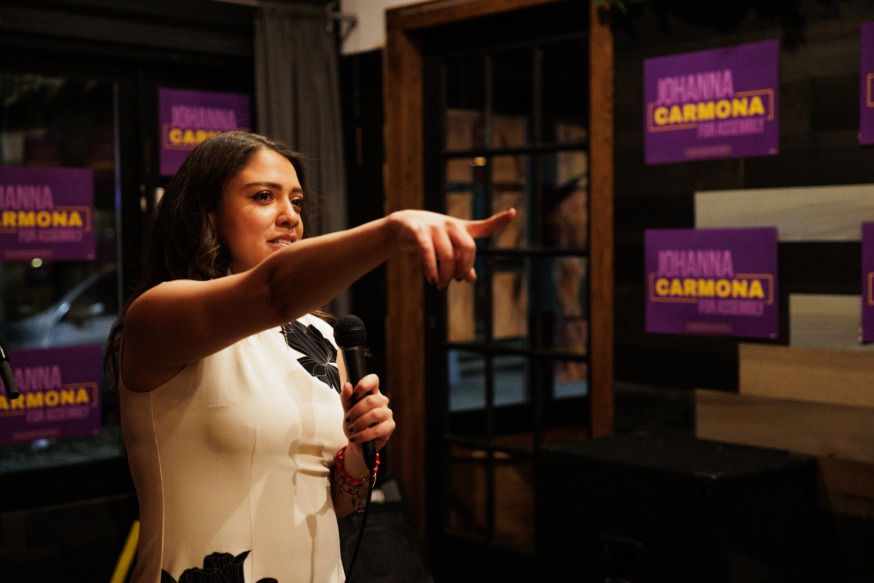By Lincoln Anderson
West and East Village, Chelsea, Soho, Noho, Little Italy, Chinatown and Lower East Side, Since 1933
Volume 77, Number 13 | Aug. 29- Sep.04, 2007
Above, the name of Julian Schnabel’s new W. 11th St. building, Palazzo Chupi, recently appeared etched on a pre-existing concrete slab on its colonnaded facade. Below, a photo taken a few weeks ago showing the building close to completion.
Bono, ‘Chupi’ and mysteries of Schnabel’s pink palazzo
“What’s a chalupa?” people once wondered, before a talking Chihuahua with a Mexican accent explained it all.
Now, along the streets of the Far West Village, a new question is echoing: “What’s a chupi?”
Whatever it means, it’s the name of Julian Schnabel’s new hot-pink high-rise nearing completion at 360 W. 11th St.
Maybe Bono and The Edge know. According to Page Six in Monday’s New York Post, the Irish rockers were recently seen checking out the building with clipboards under arm and brokers in tow — though it’s possible they still haven’t found what they’re looking for.
Brian Kelly, a Schnabel associate, said, “Bono looked at it, but there’s something on Page Six that’s not accurate.” He didn’t elaborate.
Yet the gossip column reports Bono is fleeing a chimney smoke controversy at his San Remo duplex on the Upper West Side and is taking the top two floors of Schnabel’s tower.
“We’re moving very fast to finishing,” Kelly said. “People are going to start moving in here in a week or so.” He said the place’s interior really looks spectacular.
The Venetian retro-style residential building involved constructing an 11-story addition above an existing three-story former stable. A plain concrete slab that topped the old facade has been incorporated into the project and inscribed with “Palazzo Chupi” — “palazzo” meaning “palace” or “mansion” in Italian, and “chupi” meaning, well…it’s anyone’s guess.
Schnabel, a painter and award-winning filmmaker, did not reply to an e-mail request for explanation.
Kelly, who is involved on site in the construction of the 11th St. building, said he doesn’t know.
“I actually can’t tell you what it means,” he said “It’s just Palazzo Chupi. I don’t think it’s Italian.”
For more than a year, neighbors and the Greenwich Village Society for Historic Preservation fought the tower’s construction, arguing it should not have been allowed to be built that tall, since a new Far West Village downzoning was kicking in. They charged that Schnabel — in order to convince the city that the project was already far enough along — did construction work at illegal hours in order to get in under the wire and win approval.
This June, the wraps came off the building, as black construction netting was removed to reveal its vivid color. Andrew Berman, G.V.S.H.P.’s director, raised Schnabel’s hackles then by calling it “hot pink,” to which the artist fired back that it was really “Pompeii red.”
Told of the tony building’s new name last week, Berman said it was the first he’d heard of it.
“That’s definitely new,” he said. “The panel was there before. It was either blank or had some sort of geometric element in it.
“The only thing I can say is it’s pretty tacky and it’s pretty pretentious,” Berman said. “I have no idea what ‘chupi’ means, unless it means ‘big, ugly building that never should have been built’. … He’s obviously trying to pretend that this looks somehow Florentine or Venetian, when, really, it looks like a Malibu Barbie house that exploded or something.”
Berman said he doubts West Villagers will take to calling the building Palazzo Chupi.
“I just think this building will be known as Schnabel’s Folly,” he said.
If “chupi,” like “palazzo,” is an Italian word, one would think local Italian speakers would know it.
“Never heard of that,” said Lucy Cecere, a founder of the Caring Community seniors program. “I called a friend, who never heard of it.”
Cecere suggested asking Father John Massari of Our Lady of Pompei Church at Bleecker and Carmine Sts.
“What throws me is the fact that there is an ‘H,’” said Massari, who was born in Italy. “It’s not an Italian word. The ‘H’ does not belong there. It could be a name he invented. … It is a strange name for a mansion.”
Massari checked an Italian dictionary and the only similar word he could find was “chope,” a foreign word for “beer glass.”
The father said his curiosity had been piqued, however, and that he would drive over and take a look at the place.
Assuming “chupi” isn’t Italian, there are some other possibilities.
It means “kisses” in Spanish — but “underpants” in Swahili. In Tagalog, it translates into “get lost.” And, in Peru’s indigenous Quechua language, chupi is potato soup.
In Hindi, it means “hidden.” “Chupi Chupi” is the title of a hugely popular Bollywood movie. Wait a second: Palazzo Chupi — Hidden Palace. That could work. But then why did Schnabel paint it hot pink? Some might say he could have picked a less conspicuous color for a hidden palace.
One thing is for certain. While Bono may have sung about a place where the streets have no name, if he takes the top two floors at 360 W. 11th St. it will be in a building that has one — Chupi.



